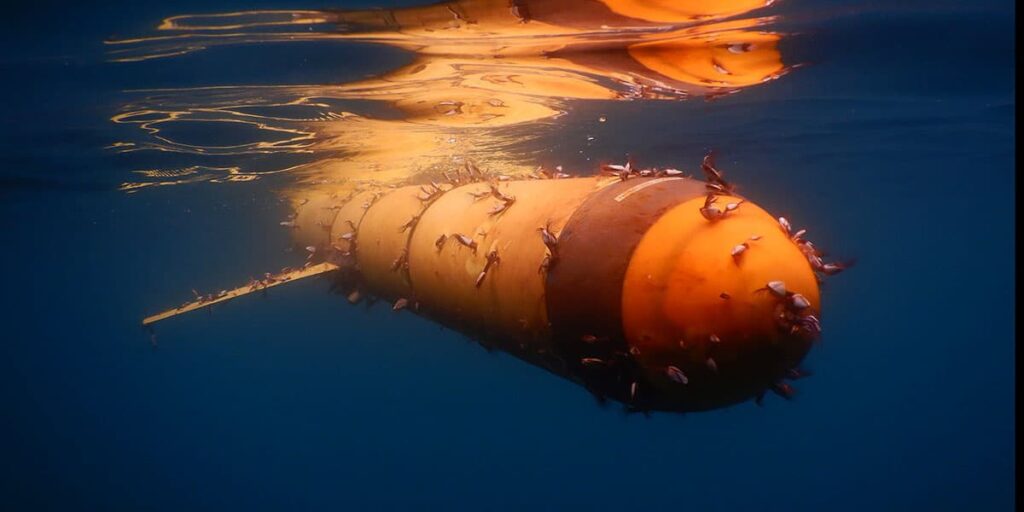Teledyne Marine’s Slocum G2 Glider autonomous underwater vehicle (AUV) has completed a four-part circumnavigation of the Atlantic Ocean that lasted for over four years. The glider, named Silbo, covered a total of 22,744 km and spent approximately 1,273 days at sea. The trip is the first such journey to ever be undertaken by an AUV.
Over the four legs of its journey, Silbo interacted with international science teams from several countries, and collected scientific and critical engineering data for a variety of programs. During its three stops, the glider received repairs to a scratched hull, an external cleaning and a fresh set of batteries, and required no other maintenance.
Following a factory upgrade to install an extended energy bay and thruster in preparation for its voyage, Silbo was launched in the early spring of 2016 from Cape Cod, Massachusetts. The first leg of its journey took it from Cape Cod to Ireland, covering a distance of 6557 km in 330 days. While in Ireland, Silbo participated in a Glider Training session hosted by the Marine Institute and P&O Maritime Services, Galway.
On the second leg, Silbo travelled from Ireland to the Canary Islands, covering 3695 km in 178 days, and participated in a “glider school” at the research facility Oceanic Platform of the Canary Islands (PLOCAN) and the University of Las Palmas de Gran Canaria (ULPCG).
The third leg lasted 418 days, taking Silbo from the Canary Islands back across the Atlantic to St. Thomas, U.S. Virgin Islands, gliding 6256 km. Supported by staff and students from University of the Virgin Islands (UVI), St. Thomas, Teledyne technicians recovered, re-batteried and re-deployed Silbo in less than 24 hours.
Silbo’s fourth and final journey from St. Thomas began on July 18, 2019 and concluded on June 29, 2020 south of Martha’s Vineyard, completing the final 6236 km trek in 348 days. During this transit Silbo spent three months flying a butterfly pattern south of Bermuda contributing data to Bermuda Atlantic Time-series Study (BATS). Silbo then joined the Gulf Stream, becoming the season’s first storm glider as Tropical Storm Arthur passed directly over the glider.
During this circumnavigation, Silbo collected hurricane data, corrected current models, and provided close to 5000 CTD (conductivity, temperature, and depth) casts that aided metalogical forecasting. With partners from Rutgers University and its student base, UVI, PLOCAN, UGCLP, the Marine Institute, and others, Silbo also participated in the Challenger glider mission. Silbo has also been used as a test bed for many new engineering hardware and software features for both existing and next generation Slocum gliders. Recent legs have provided data on new battery configurations, advanced software, and techniques for piloting long endurance missions and minimizing biofouling.
Clayton Jones, Senior Director of Technology at Teledyne Webb Research, commented: “Born out of Dr. Rick Spinrad’s challenge to build a robot that can cross the Atlantic, these long-endurance oceanic scale basin crossings with little yellow submarines are becoming more and more routine. Along the way, we continue to entrain international and educational outreach and better our global ocean predictive skills – a testament to the foresight of Dr. Henry Stommel and Douglas Webb who were instrumental in bringing undersea gliders to life.”
Scott Glenn, Board of Governors Professor at Rutgers University, stated: “A technological achievement, a global team-building achievement, with data impact on hurricanes and others. A four-year mission for the record books. Congrats to all involved!”











